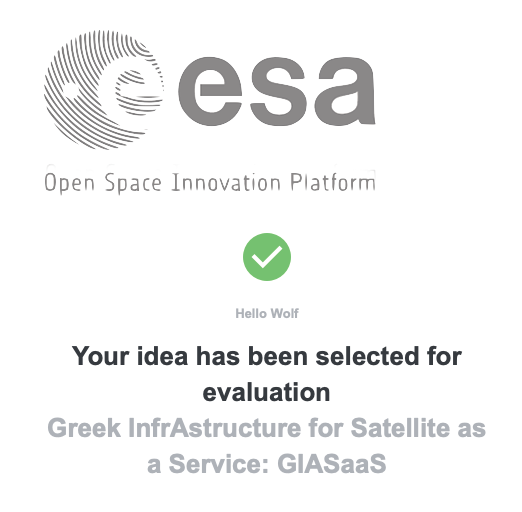Good news: Our new ESA project: Greek InfrAstructure for Satellite as a Service: GIASaaS (headed by OHB-Hellas) has been selected for evaluation!

Cretan Matter Waves Group

Good news: Our new ESA project: Greek InfrAstructure for Satellite as a Service: GIASaaS (headed by OHB-Hellas) has been selected for evaluation!

Our paper just got published:
Precise and robust optical beam steering for space optical instrumentation
G. Drougakis, K. G. Mavrakis, S. Pandey, G. Vasilakis, K. Poulios, D. G. Papazoglou, and W. von Klitzing
CEAS Space Journal (2019)
http://dx.doi.org/10.1007/s12567-019-00271-x


The scientific objective is to investigate Gravitational Waves and other fundamental aspects of gravity as well as the connection between gravitational physics and quantum physics using new quantum sensors, namely, optical atomic clocks and atom interferometers based on ultracold Strontium atoms.
Combining quantum sensing and quantum communication, SAGE is based on recent im- pressive achievements in quantum technologies for optical clocks, atom interferometers, microwave and optical links. This call provides a unique opportunity to investigate in detail the fascinating idea of this ultimate multi-purpose gravity explorer based on all the most advanced achievements in the field.
We consider a multi-satellite configuration with payload/instruments including Strontium optical atomic clocks, Strontium atom interferometers and satellite-to-satellite/satellite- to-Earth laser links.
SAGE main scientific goals are: PRIMARY GOAL:
• Observe Gravitational Waves in new frequency ranges with atomic sensors.
• Search for Dark-Matter
• Measure the Gravitational Red Shift
• Test the Equivalence Principle of General Relativity and search for spin-gravity coupling
• Define an ultraprecise frame of reference for Earth and Space and compare terrestrial clocks
• Investigate quantum correlations and test Bell inequalities for different gravitational potentials and relative velocities
• Use clocks and links between satellites for optical VLBI in Space
Although the technology for such a mission is not mature yet, it takes advantage of devel- opments for the ACES (Atomic Clock Ensemble in Space) mission and the results of ESA studies for SOC (Space Optical Clock), SAI (Space Atom Interferometer), STE-QUEST, GOAT and ongoing national projects in this frame.
Supporting scientists and institutes from ESA member states as well as from USA, China, Japan, Singapore are listed in the final section of the proposal.
G. M. Tino (Lead Proposer) – Universita di Firenze, LENS, INFN, Firenze, Italy
K. Bongs – School of Physics and Astronomy, University of Birmingham, UK
P. Bouyer – Laboratoire Photonique, Numerique et Nanosciences, Bordeaux, France
W. Ertmer – Institute for Quantum Optics, Leibniz Universität Hannover, Germany
L. Iess – Dipartimento di Ingegneria Meccanica e Aerospaziale, Universit`a di Roma, Italy
A. Peters – Humboldt Universität zu Berlin, Germany
E. Rasel – Institute for Quantum Optics, Leibniz Universität Hannover, Germany
A. Roura – Institut für Quantenphysik, Universität Ulm, Germany
C. Salomon – Laboratoire Kastler Brossel, Ecole Normale Superieure, Paris, France
S. Schiller – Institut für Experimentalphysik, Universität Dusseldorf, Germany
W. Schleich – Institut für Quantenphysik, Universität Ulm, Germany
F. Sorrentino – Istituto Nazionale di Fisica Nucleare, Sezione di Genova, Italy
U. Sterr – Physikalisch-Technische Bundesanstalt (PTB), Braunschweig, Germany
F. Vetrano – University of Urbino, Italy
P. Villoresi – Department of Information Engineering, University of Padova, Italy
W. von Klitzing – IESL–FORTH, Crete, Greece
P. Wolf – LNE-SYRTE, CNRS, Observatoire de Paris, France